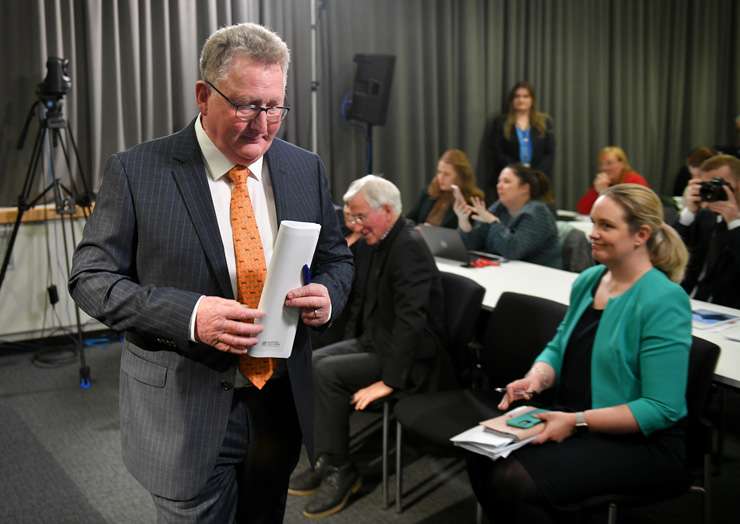Revised economic forecasts this week have opened the door to speculation that the Official Cash Rate has not yet peaked and the mortgage interest rates could go higher.
Two major banks are predicting the cash rate will go to 5.75% in November, and on Wednesday the Reserve Bank of New Zealand signalled that it won’t start cutting the OCR until 2025.
So how much worse can it get for mortgagors, many of whom are set to refix onto higher, more punishing rates before the year is out?
OneRoof asked economists and mortgage brokers if floating interest rates, currently sitting around 8.5%, could hit double digits, and one-year and two-year terms could rise to 8%-plus.
Start your property search
Their answer was a resounding no, with many picking that bank interest rates would fall before the OCR does, but one expert did warn consumers that further rate increases by the banks were a possibility.
Independent economist Tony Alexander said there was “not much chance at all” of another extreme hike in interest rates.
Read more
- Surge or splutter: What are the predictions for house prices in 2024?
- Deceased estate with stunning view of Auckland harbour sells for $12.5m
- Tony Alexander: Forget about the cash rate - start worrying about China
“We’d need a whole lot of inflation for it to get that bad. And it’s fairly unlikely to get to 8 or 9% unless there is fresh new information from China,” he said, referring to the country’s ailing economy.
Alexander said inflation pressures in New Zealand had peaked, and noted that people’s sensitivity to interest rate changes was much greater now than it was the last time rates hit 11% back in early 2008.
John Bolton, Squirrel founder and head of mortgages, was also adamant rates won’t get to that 10%, but he did point out that because homeowners were carrying a lot more debt these days, smaller interest hikes were having a bigger impact.
“The Reserve Bank has to find the ‘Goldilocks’ OCR level – a neutral cash rate of about 2.5% to 3% that’s not hurting too much, but not stimulating too much,” he said.

Independent economist Tony Alexander: "We’d need a whole lot of inflation for it to get that bad." Photo / Fiona Goodall
Bolton told OneRoof the burden of the Reserve Bank’s rate rise strategy was being carried unequally. “It’s smashing young first-home buyers – all for the common good. Is that the best way to slow down inflation?
“If you’re 50 and paid off most of your mortgage, servicing it is not a big issue. If you’re in your 30s, with young kids, you’re hit hard. It’s hurting the people it shouldn’t be hurting.
“Farmers are feeling it, too. Export [prices] are down, input costs are higher and borrowing really hurts.”
However, Bolton also expects that a naturally slowing economy will lead to rate cuts before 2025. “We’re slowing down on our own. The bigger question is when rates start to fall, but that’s a long way off.”
EasyStreet Mortgages financial adviser Gareth Veale was skeptical about further rate rises, and while he noted that published floating rates were high, he said banks were able to apply discounts to customers.
Veale said the situation was different for borrowers with loans from non-bank lenders, who may already be struggling with rates that have ballooned from 3.34% to as high as the early 10s.
“In the good times, some of the non-bank lenders were charging interest rates 1.5% more than a bank. Now some of them are charging 4 to 5% more than a bank."

Reserve Bank Governor Adrian Orr after this week's press conference. Photo / Getty Images
While he’s not seeing an uptick in mortgagee sales yet, that didn’t mean there no pain or distress in the market. “I do see a lot of unsecured debt like credit cards or car loans in arrears at the moment. People will do anything to keep a roof over their heads.”
The good news, he said, is that banks want to work with people struggling to meet payments. “They’re not in the business of selling houses.”
CoreLogic chief economist Kelvin Davidson said the full impact of the Reserve Bank’s cash rate hikes had yet to felt. “There’s so much more bang left to come, people haven’t felt the full effects yet,” he said.
The figures show that average interest rates on mortgages are sitting at around 5%, but with more than half of all homeowner loans set to roll over onto higher rates in the next 12 months, that average will grow to 7%.
“We know that 89% of existing loans are fixed, and we know that 52% of those are yet to be re-priced in the next 12 months.”
Davidson said that borrowers were starting to figure out that longer fixed terms may be their best bet. In March just 5% of loans were fixed for three years, but by June this was up to 15%.
Like Bolton, Davidson believes that a relatively concentrated proportion of the population is carrying the inflation-busting burden – people who bought in the last three or four years, with little equity and high loan amounts.

Squirrel's John Bolton: "If you’re in your 30s, with young kids, you’re hit hard." Photo / Supplied
Jose George, New Zealand general manager of Canstar, said floating rates of 10% or more was still a possibility for homeowners.
“Floating rates last went above 10% in mid-2008, during the financial crisis. At that time, the Official Cash Rate was around 8%,” he said.
“At 5.5%, the current OCR rate is well below that high. However, we’re seeing a bigger differential with floating rates, which are averaging around 8.5%. This will be the result of other factors in the market, such as the swap rates.
“Bottom line is that we are likely facing further retail rate hikes, and homeowners need to be prepared to manage even greater financial stress. This will be the case whether you choose a floating rate, which can be useful for financial flexibility, or a fixed-term rate which offers certainty of payments.”
George said that Canstar’s database shows the average one-year rate is now 7.23%, the two-year rate is 6.9% and the three-year rate is 6.59%.
Kiwibank’s chief economist Jarrod Kerr called the Reserve Bank’s revised forecast “a giant leap backwards” in his economic note this week. “We’d prefer they leave it alone. I think they’ve done enough.”
He told OneRoof: “[The OCR] is the only tool they have. Obviously it hurts some people more than others, but it’s designed to hurt to get demand down to reduce inflation. Our call for a rate cut as early as February looks increasingly unlikely.”
Use the search field to find out the best mortgage deals available today.












































































